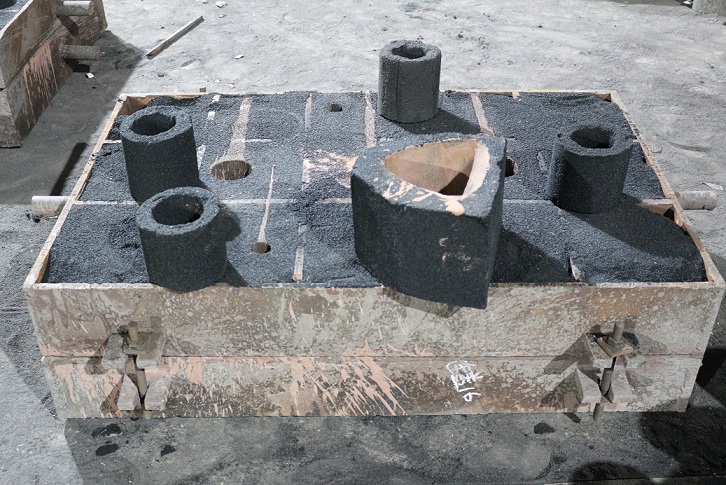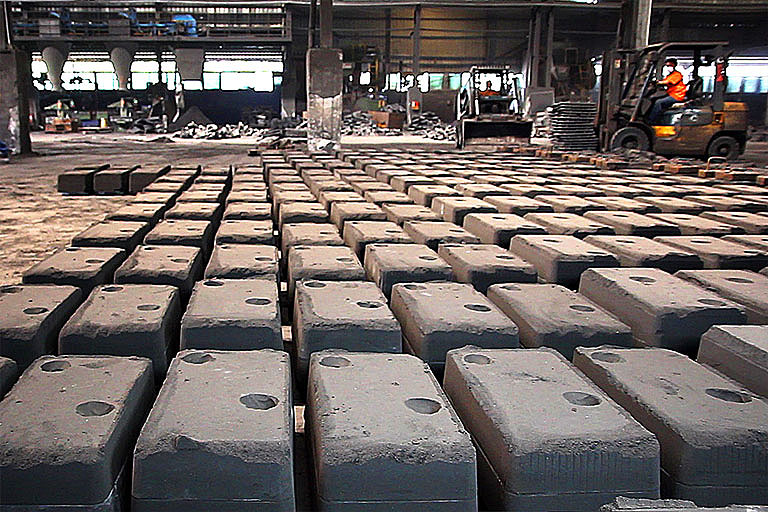Sand Casting: An Ancient Yet Versatile Metal Casting Process
Sand casting, a method with roots dating back to 1000 BC, remains one of the oldest and most versatile metal casting processes. This technique utilizes expendable sand molds to create intricate metal parts of various shapes and sizes at a relatively low cost. The process involves molten metal, a furnace, a sand mold, and a pattern. The metal is melted in the furnace, poured into the sand mold cavity, and shaped by the pattern.
Once the metal solidifies, the casting is extracted from the mold. Remarkably, more than 50% of all metal casting products are exclusively manufactured using sand casting.

Sand casting manufacturers produce a diverse range of castings, varying in sizes and weights from a few grams to several tons. Various materials and methods, including resin sand casting and green sand casting, can be employed. Smaller parts include pulleys, connecting rods, crankshafts, and gears, while larger components consist of engine blocks, transmission cases, cylinder heads, and engine manifolds.
The Sand Casting Process:The process encompasses six main steps:
1. Pattern Placement: Create a mold by placing a reusable pattern with the same shape as the final product into the sand. Allowance is made for thermal shrinkage.
2. Gating System Incorporation: Form a sand mold by placing the pattern inside sand blocks.
3. Pattern Removal: Separate the mold into cope (upper half) and drag (lower half). Remove the pattern, and rejoin the halves, leaving a cavity matching the pattern.
4. Molten Metal Pouring: Fill the mold cavity, runner, and riser pathways with molten metal.
5. Metal Cooling: Allow the molten metal to cool.
6. Mold Breakaway and Casting Removal: Shake the sand block to release the solidified metal. Recover and reuse most of the sand. Separate gates, runners, and risers from the casting for further post-casting processes like machining and grinding.
Why Sand Casting is Popular:Over 60% of all metal castings are produced through sand casting due to its versatility. This method accommodates various sizes, shapes, and designs with ease. It offers flexibility in material choice, supporting the use of most metals and alloys. Combined with cost-effective tooling and a straightforward casting operation, sand casting is a preferred method for producing a wide range of metal castings, despite its susceptibility to porosity and other defects.
Sand Casting Process Capabilities:
| Typical | Feasible | |
|---|---|---|
| Materials | Cast iron, Carbon steel, Alloy steel, Stainless steel, Nickel, Magnesium, Copper, Aluminum, Zinc, Titanium, Lead, Tin | |
| Quantity | 1-1000 | 1-1000000 |
| Tolerance | ±0.03 in | ±0.015 in |
| Surface Finish | 200-700 µin | 100-2000 µin |
| Max. Wall Thickness | 0.120-6 in | 0.08-45 in |
| Casted Part Size | Few ounces-500 ton | Few ounces-500 ton |
| Shapes | Thin-walled: Complex, Solid: Cylindrical, cubic, complex, Flat-walled: Cylindrical, Thin-walled: Cubic |

Advantages and Disadvantages of Sand Casting:
| Advantages: | Disadvantages |
| Large parts can be produced. | Low material strength. |
| Low tooling and equipment costs. | Typically, only one mold per box. |
| Wide selection of metals. | High processing costs. |
| short lead times. | Low dimensional accuracy. |
| Ability to cast complex shapes. | High waste generation. |
| Recyclability of scrap metal. | Poor surface finish. |
| Prone to shrinkage, Porosity, and pouring errors. | |
| Often requires secondary machining operations. |
Sand casting is more than pouring molten metal. It demands years of experience to master the process.
Dongrun Casting have 20000 square meters facility houses and 200 production & test equipment, From quotation and tooling design to casting and finished machining, we can work with you at every stage. We serves wide range of industries-from Fortune 500 corporations to small and midsize OEMs. Our products includes: Automotive&Trucking, Electric Utility & Communications, Metering System, Hydraulic Industry, Medical Devices, Lighting, Fuel and Gas Pressure, Furniture parts.
More Details : www.dongruncasting.com
